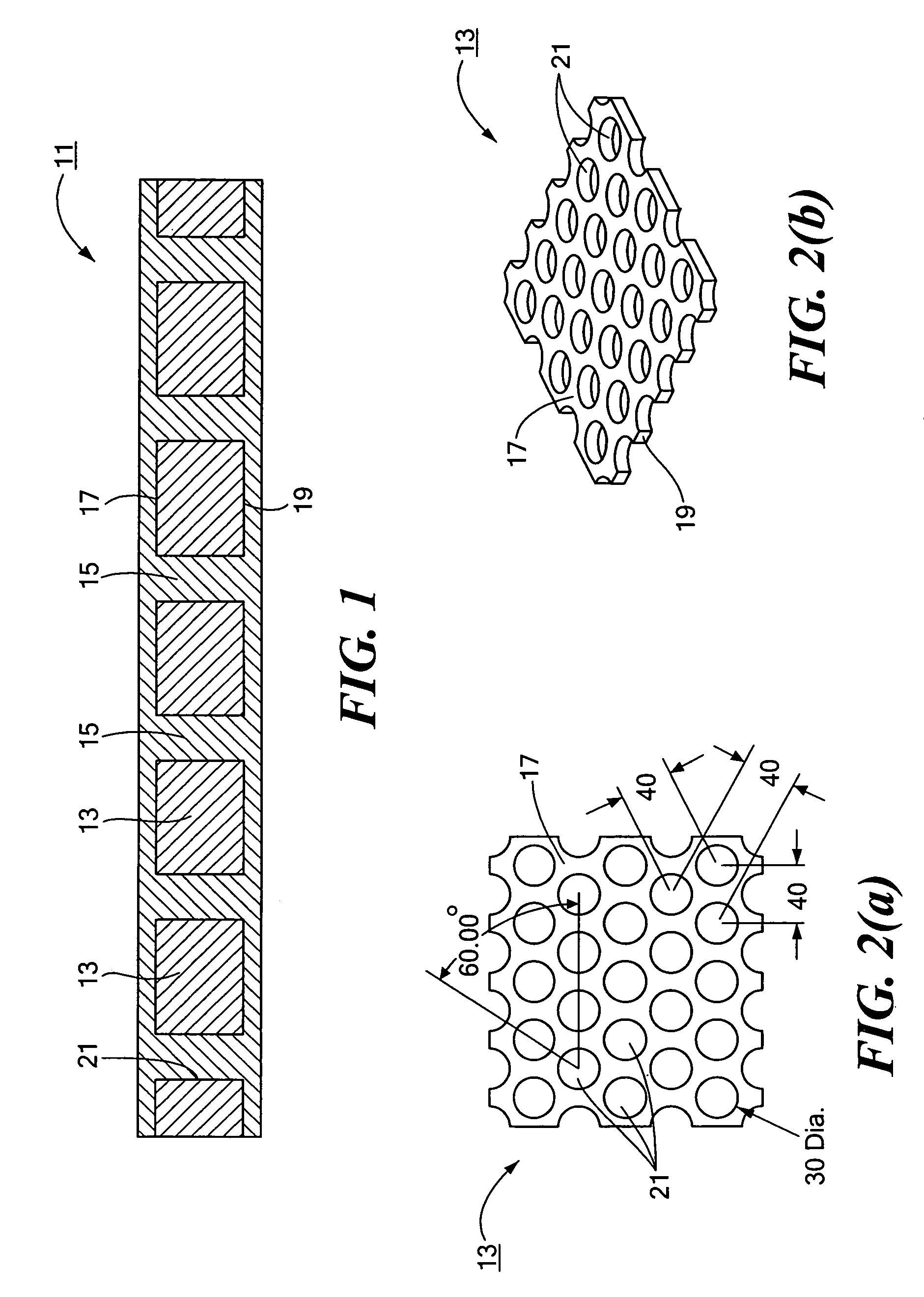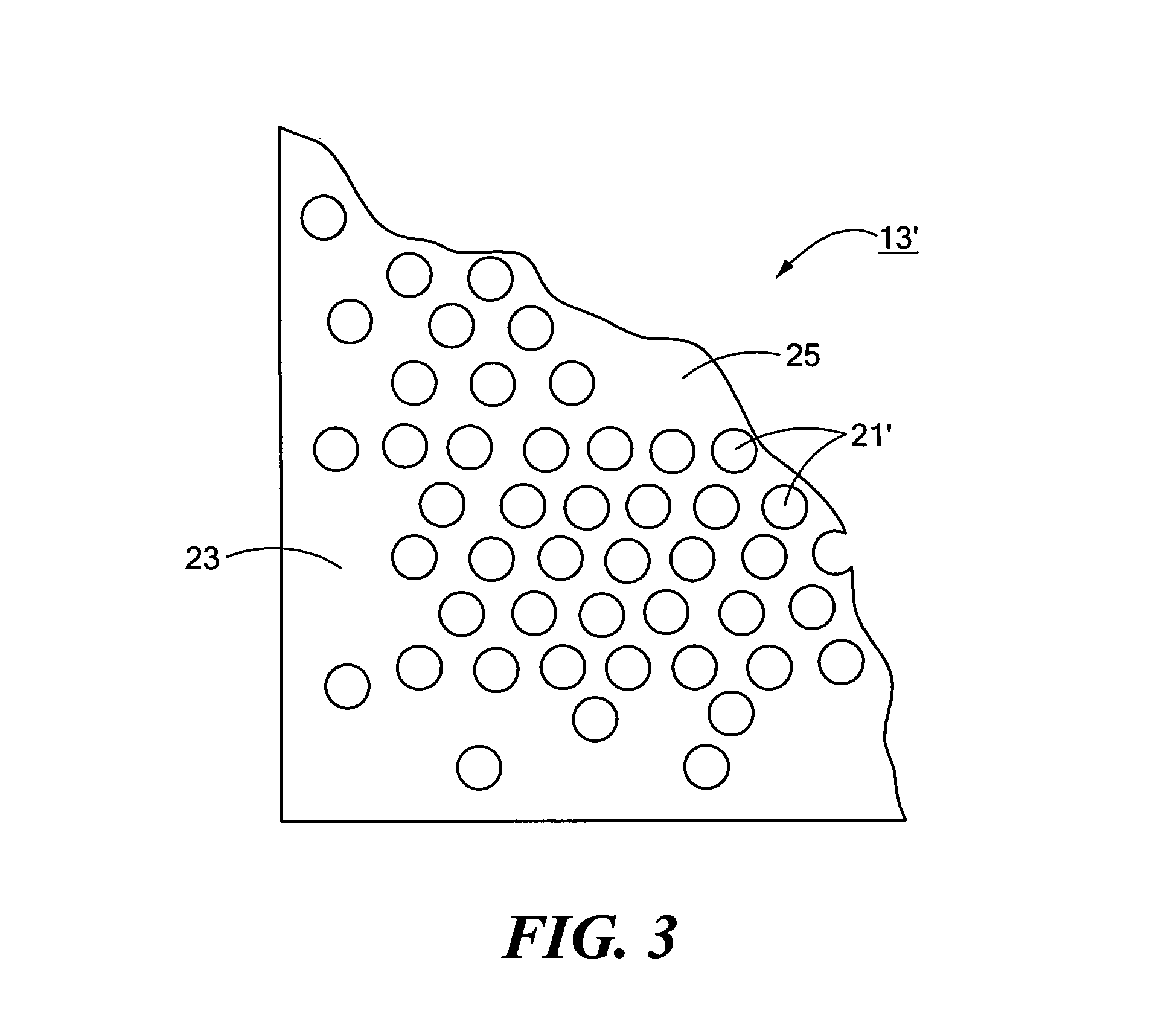Solid polymer electrolyte composite membrane comprising laser micromachined porous support
a technology of electrolyte and composite membrane, which is applied in the direction of cell components, final product manufacturing, sustainable manufacturing/processing, etc., can solve the problems of premature failure of cell operation, increased shorting, and increased shorting of pfsa pems
- Summary
- Abstract
- Description
- Claims
- Application Information
AI Technical Summary
Benefits of technology
Problems solved by technology
Method used
Image
Examples
example 1
[0058]A plurality of pores were formed in a piece of 8 μm thick Kapton® polyimide film (DuPont, Wilmington, Del.) using an excimer laser and near-field imaging. The diameter of each pore was 30 μm, and the distance between the centers of the pores was 40 μm. Nafion® PFSA solution, with an equivalent weight of 1100, was coated onto the porous film, and the product was then heated to dry off the solvent from the coated PFSA solution and to cure the PFSA polymer. The resultant composite membrane had a thickness of approximately 32 μm. The mechanical strength of said composite membrane was then compared to that of Nafion® 112 PFSA film and found to be approximately 100 times stronger than Nafion® 112 PFSA film at elevated temperatures.
example 2
[0059]A composite membrane identical to that of Example 1 was prepared. A catalyst in the form of a carbon black supported platinum was sprayed onto plastic thin films to form catalyst decals. The catalyst decals were then hot pressed against opposing surfaces of the composite membrane to form an MEA. The MEA was then sandwiched between two pieces of teflonated porous carbon paper and assembled into a functional PEM fuel cell as described in U.S. Pat. No. 4,215,183, inventor MacLoed, which issued Jul. 29, 1980, the disclosure of which is incorporated herein by reference.
[0060]The foregoing PEM fuel cell was then tested at 80° C., with the anode saturator temperature controlled at 90° C. and the cathode saturator temperature controlled at 65° C.
[0061]As can be seen in FIG. 6, the performance of the subject fuel cell was similar to a fuel cell containing a Nafion® 112 PFSA membrane having a thickness of 50 μm.
example 3
[0062]A composite membrane identical to that of Example 1 was prepared. A pure Pt black catalyst serving as a cathode catalyst and a Pt / Ir mixture serving as an anode catalyst were pressed onto opposing surfaces of the composite membrane to form an MEA. The MEA was sandwiched between porous titanium metal meshes or sinters and assembled into an electrolysis cell as described in U.S. Pat. No. 6,500,319, inventors LaConti et al., which issued Dec. 31, 2002, the disclosure of which is incorporated herein by reference. The resulting electrolysis cell was operated at 80° C. under ambient pressure and its performance compared to a similar electrolysis cell containing a Nafion® 112 membrane. As can be seen in FIG. 7, the performance of the two electrolysis cells was similar.
PUM
| Property | Measurement | Unit |
|---|---|---|
| diameter | aaaaa | aaaaa |
| diameter | aaaaa | aaaaa |
| thickness | aaaaa | aaaaa |
Abstract
Description
Claims
Application Information
 Login to View More
Login to View More - R&D
- Intellectual Property
- Life Sciences
- Materials
- Tech Scout
- Unparalleled Data Quality
- Higher Quality Content
- 60% Fewer Hallucinations
Browse by: Latest US Patents, China's latest patents, Technical Efficacy Thesaurus, Application Domain, Technology Topic, Popular Technical Reports.
© 2025 PatSnap. All rights reserved.Legal|Privacy policy|Modern Slavery Act Transparency Statement|Sitemap|About US| Contact US: help@patsnap.com



